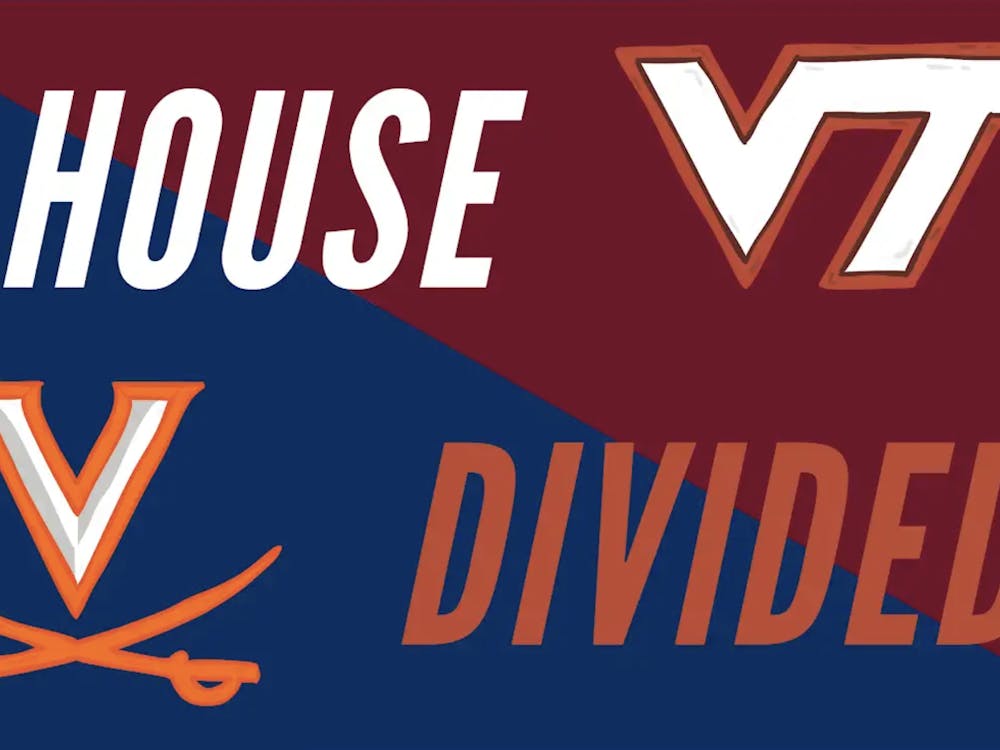While most football teams rely heavily on the pass-catching ability and game-breaking speed of their wide receivers, those skills seem to be superfluous requirements to play the position for the Cavaliers.
Against Duke, the hands of starting receivers Deyon Williams and Michael McGrew were far more likely to be found grappling with the shoulder pads of a Duke defensive back than they were to be reaching for the pigskin being tossed their way. Admittedly, Saturday's game was a special case, as quarterback Marques Hagans showed early that he was either too injured or too rusty from lack of practice time to connect on any deep passes.
"We prepped [the receivers] quickly during the game to understand what kind of game it was going to be for them," Virginia coach Al Groh said. "It wasn't going to be a big catch game."
On the day, Virginia's wideouts combined for four catches for 25 yards. Not one of those catches went for more than nine yards.
To their credit, Groh said he was pleased at the downfield blocking shown by his wideouts.
"Mike and Deyon were really pretty relentless," he said. "They did a real good job for us on that. For the amount of time we had to [block], I thought it was probably one of the better games that that position has had of doing that."
We've seen several instances of their blocking aptitude firsthand this season. Hagans' 59-yard TD run against Syracuse wouldn't have been possible had McGrew not been running interference downfield. After completing his route and not receiving the ball, McGrew had the wherewithal to throw a block for his quarterback and sustain it until Hagans had reached the end zone.
Through seven games, Williams and McGrew have 16 and 15 receptions, respectively, and no other receiver has more than three. Even when Alvin Pearman started at the position during the Syracuse game, he only caught two balls for 12 yards.
Instead, Virginia's receivers spend most games blocking. It's not a glamorous lifestyle for these speedsters accustomed to making big plays, but it is a necessary one on a team that has run the ball 66.1 percent of the time.
Not only has the receiving personnel had to adjust to this increasingly run-oriented offense, they've had to do it without their biggest receiver, Fontel Mines, and their two best blockers from a year ago, Ottowa Anderson and Ryan Sawyer. Mines returned to the Virginia lineup Saturday after missing the previous five games with a broken collarbone. Sawyer graduated, and Anderson left the team in the offseason.
Anderson may not have had velvet-soft hands, but he started for this Cavalier team because of his run-blocking on the outside. He was so sufficiently talented that Williams uses him as a benchmark for his own skill. Anderson also instilled in Williams the importance of blocking in this offense.
"I'm probably not as good as [Anderson] right now, but I'm working on getting there," Williams said. "You've got to do a lot of blocking to play."
That is exactly the type of team-first attitude Groh wants from his players. It's no wonder he often speaks glowingly about the sense of purpose about this year's squad.
You can find it in the offensive line that worked so hard to give Pearman a shot at the rushing record against Duke. You can see it in Jermaine Hardy, Marquis Weeks and Tom Santi, who willingly changed positions in the team's best interests. And now you can see it in the receivers who routinely forfeit the ball-handling aspect of their positions, knowing that a running game is essential to late season success.






